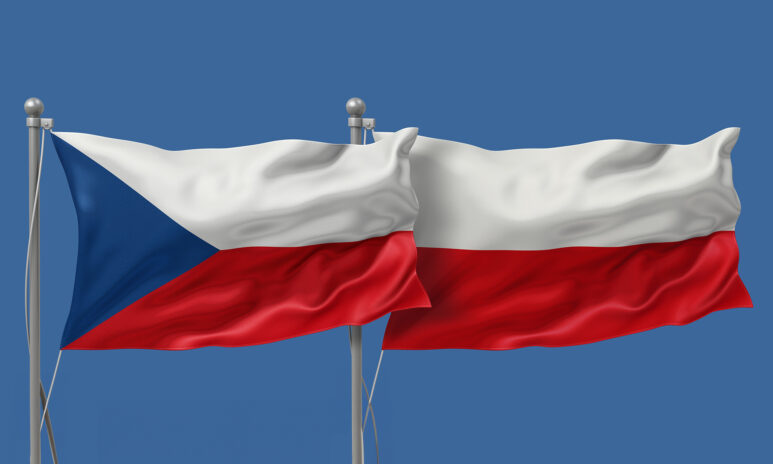Remember the 1990s when Hungary was leading Central Europe’s economic race? As the 2000s unfolded, the Czech Republic emerged as the new regional leader, holding on that title for quite a while.
In recent years, however, Poland has surged ahead, outpacing its Central European neighbors. A clear indication of this shift is the increasing number of international companies consolidating their Central European operations in Poland, effectively positioning the country as the new regional leader. This transition raises several crucial questions: Why are companies increasingly consolidating their operations in Central Europe? How does this clustering influence the organizational design of these companies? And what effect does it have on the development and profiling of leaders in the region?
To explore these questions, I interviewed several senior leaders responsible for international operations in Central Europe. Their insights provide a clearer view of the challenges associated with clustering in the CEE region, offering a deeper understanding of this significant shift in regional dynamics.
What is the definition of a cluster?
The term “cluster” once conjured images of COVID-19 hotspots. Today, it’s taken on a whole new meaning in the business world, as illustrated in Central and Eastern Europe, where it’s now synonymous with organizational transformation. This shift, often referred to as “clusterization,” is sweeping through international companies as they regionalize their operations.
From the perspective of Germany, France, or the UK, forming a cluster in Central Europe might appear straightforward: simply combine the populations of the Czech Republic, Slovakia, and Hungary, and you still wouldn’t reach the size of Poland alone. The arithmetic seems simple: group these four countries (historically known as the Visegrad group) and you have a Central European cluster.
This trend of clusterization has evolved through several waves of consolidation. We have witnessed organizations across the Baltic states merging into single entities, and the re-merging of Czech and Slovak operations. In some cases, a second wave of integration has included Hungary or Romania, creating South Central or South Eastern European hubs that cover countries like the Czech Republic, Slovakia, Hungary, Romania or the former Yugoslav states.
Now, a new phase is unfolding in the regional clusterization of Central and Eastern Europe, with Poland emerging as a potential anchor in the broader Central European framework.
Since Russia’s invasion of Ukraine, Poland has swiftly become a regional hub, with many international companies shifting their back-office support—and sometimes even management—for Ukrainian operations to Poland.
But why are companies so invested in building clusters?
Alastair Teare, a former Chief Executive Officer of Deloitte Central Europe based in Budapest, sheds light on the strategy: “Companies pursue clusterization to achieve economies of scale. They aim for greater efficiency from their resources, and clusters provide that scale. That’s why we’re seeing a push toward the regionalization of Central Europe.”
Vaher Kuuno, Cluster Country Director for Central Europe at AstraZeneca in Prague, agrees: “Clusters are designed to create synergies while maintaining a strong local focus. The cluster model provides scale from a budget standpoint and enables internal resource movement.” However, he underscores that at AstraZeneca, “our top priority is ensuring that our tactical plans remain country-specific.”
Lukas Poor, former Country Manager at Unilever Slovakia and now CEO of House of Lobkowicz in Prague, offers a perspective from the fast-moving consumer goods sector: “With increasing competition and pressure from shareholders, companies are racing to shorten the gap between global decisions and local execution. They’re striving for swift, disciplined action, integrated investments, and cost-effective programs.”
Clusters introduce a new lens to view business—between the HQ and country levels. A Czech General Manager who has experience from both sides as Area General Manager for Central and Eastern Europe and now as Country Head for Czech and Slovakia, captures this duality: “At the country level, it can feel like the cluster is a remote power trying to exert control. But from the cluster’s perspective, the aim is to drive efficiency and streamline processes.”
So, what do you include in a cluster?
Vaher Kuuno acknowledges the ongoing debate: “There’s always a question of what should be managed at the cluster level and what should remain at the local level. However, support functions typically yield the most significant savings when centralized.”
There is a consensus that a one-size-fits-all approach—does not work – what is effective for one company might not be suitable for another.
Zdenek Rihacek, Regional Senior Managing Director at Procter & Gamble (responsible for Czechia, Slovakia, Croatia, Slovenia and Baltics), explains: “Clustering decisions generally can’t be based solely on cost. Multiple factors must be considered: geopolitical landscape, the nature of the markets themselves—not just their size, but also their structures and dynamics. In some countries international hypermarket chains dominate, while in others local retailers or discounters are more prevalent, which changes the business dynamics significantly. This results in vastly different shopping experiences and behaviors, which in turn greatly affect category development. Also the supply chain network is a key factor”.
He continues, “In general, clustering is more effective with a limited number of markets. You might have one large market surrounded by a few smaller ones to drive cost efficiencies, but having too many countries in a cluster can hinder innovation and business growth across. For example clustering Poland with too many other countries can shift focus disproportionately to the larger market, creating the false assumption that all consumers are the same, which is far from reality. Consumer preferences and habits can vary significantly—e.g. some markets are more premium-driven, while others are discount-oriented.”
What is the impact of clusterization on the profiling of country leaders in the region, particularly on the role of General Manager? In other words, is there a risk that clusterization is “juniorizing” this key position?
Several people I interviewed for this article chose not to be quoted on the record, underscoring the sensitivity of this issue. Lukas Poor acknowledges, “One of the impacts is that there are fewer General Managers at the country level. Instead you now see ‘Heads of’ positions which are essentially extensions for responsibilities of Heads of Sales.”
In other words, General Managers in clusterized organizations are no longer truly General Managers. As one source bluntly put it: in matrix organizations, the overall performance of a country becomes a secondary concern. Culture is managed elsewhere, R&D is off-limits, finance reports to a different office, and marketing is increasingly centralized – local teams handle execution, but the creative direction is not expected of them. The unspoken message is clear: focus on delivering the top line, and we’ll handle cost-cutting. Essentially, General Managers have been reduced to “Country Managers” with a narrow focus on sales. This is part of a broader trend among global companies to streamline operations, which has led to growing frustration in local markets and challenges in talent development.
This shift also diminishes the seniority and remuneration of General Manager roles. As the Czech General Manager of an international FMCG company told me, “GMs in the Czech Republic no longer hold the same status. At the CEE VP level, you’re grade 2; at the GM level for Czech, you’re grade 4. This says it all.”
Still there is one area in HR where clusterization adds significant value: it is talent development. Vaher Kuuno explains, “In a cluster setting, there is more opportunity to develop talents quickly and to give individuals the chance to lead multiple countries within their area of expertise. This experience equips them with the skills to manage complexity and provides a clear competitive edge over colleagues in similar roles who manage only one country.”
How does the push for clusterization influence the rivalry between Poland and the Czech Republic for regional leadership? And what impact does it have on relationships between Poles and Czechs within the same organizations?
A Czech General Manager acknowledges, “There’s always a bit of competition between Poles and Czechs. Czechs often think they know better, while Poles are confident that Czechs will eventually adopt their way of doing things.”
Another Czech senior leader in the financial sector adds, “in my experience, the relationship between Czechs and Poles in the workplace has often been a running joke. When interviewing Polish managers for regional roles, they frequently emphasize that Poland is the biggest and fastest-growing economy in Europe. It’s true—Poles are excellent at presenting themselves and have a strong cultural bond; they tend to stick together”, he explains.
The Polish regional head of an insurance company offers a different perspective: “Poles are loyal, courageous, reliable, and strong entrepreneurs, but their management approach is often quite vertical. This can be perceived by Czechs as a superiority complex, creating challenges in cluster organizations where multicultural and collaborative profiles are essential.”
For many international companies, the straightforward approach is to appoint the Country Manager for Poland to lead the region, with country heads for the Czech Republic, Slovakia, or Hungary reporting to them. But is it really that simple?
Not exactly. Vaher Kuuno cautions, “While clusters provide scale, if a country director oversees, say, three countries, it’s essential to ensure they maintain equal focus on all three, supported by strong KPIs to maintain balanced importance.”
Clusterization is just starting to gain momentum
Conversations with senior CEE leaders across industries, such as pharmaceuticals and fast-moving consumer goods reveal a clear trend: regional clusterization is becoming a top priority for multinational companies. However, this trend presents a complex challenge, highlighting that a one-size-fits-all approach is unlikely to succeed.
The days of operating fully independent organizations in every Central and Eastern European country are fading. Companies are increasingly focused on finding the optimal organizational design that balances the need for scale with the importance of maintaining a strong, country-specific focus. The move toward regional clusterization is just starting to gain momentum.





